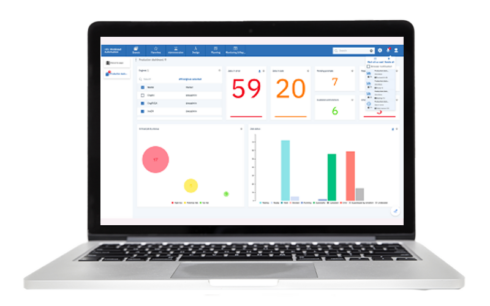
The Dynamic Workload Console (DWC) has become a core platform for workload automation, providing visibility into everything all in one place.
“The designing of a job stream is a key operation for schedulers and application developers to or interconnect business applications and achieve governance and control,” Zaccone said. “Our idea with the new Workload Designer is to empower what we had and push it to an advanced level to provide everything is needed to our customers.”
The general goal is also to have a console in which someone who is new to workload automation can manage things like governance and processes in their full lifecycle, from scheduling to the monitoring. This is the first time when users can benefit from having everything all in one place in a one-stop automation platform.
The new Workload Designer version provides a streamlined single point of control for the design of WA objects, based on security authority for each object, including Workstations, Event Rules, and an integrated Workload Application Template import definition.
One addition in the new release is object listing which is based on hierarchical views displayed in folders. It also enables multiple object editing at the same time.
“The idea is to empower what we had and to push it to an advanced level to give everything you need for our customers,” Zaccone said. “We also wanted to give customers a place where someone can easily get started and to keep everything under control including all of the processes from the scheduling to the monitoring.”
Since customers are now more often using the Workflow Designer and the Dynamic Workload Console, the expanded contextual help allows them to utilize more of the features that the platform offers.
The new Workload Designer enables a more responsive, fast and fluid user interface. The Workload Designer landing page immediately gives a full picture of folders and workload definitions status, and the explore area is customizable by the user. Order the counters or pass to a compact view, all based on your preferences. The Workload Designer tables allow you to organize columns and data to view.
“Whether it’s the business user, the admin, the operator, all of them can leverage the Dynamic Workload Console for different reasons,” Zaccone said.
The business user may want to use the Dynamic Workload Console to define and monitor custom dashboards and KPIs. Meanwhile, the admin is the one defining the eye-level design and the big picture of what is happening so they can define the job stream and the workflow. The operator would most often use the Dynamic Workload Console to define what is available starting from templates.
Overall, the new Workflow Designer focuses on providing customizability.
“The ability to define custom dashboards is one of the most appreciated things by the customers,” Zaccone said. “Workload Automation can do many things and interconnected IT and business processes. But at the end of the day, you want to know how things are going. So, it’s important for the tool to show that everything is going fine, or when something is wrong, it enables the operator to quickly do a deep dive very quickly into the problem.
You can access the DTC from any computer in your environment using a web browser through both secure HTTPS or HTTP protocol. DTC also provides graphical views tools to manage the workload including the graphical view for modelling, plan view for monitoring, a job stream view for monitoring, troubleshooting, and impact analysis, and a preproduction plan view for workload planning. From each view, users can take actions on objects, view their properties, and easily switch between the views.
Start your 90-day free trial and get hands-on experience with a one-stop automation platform, click here.
About HCL Software
HCL Software, a division of HCL Technologies (HCL) develops, markets, sells, and supports over 30 product families in the areas of Customer Experience, Digital Solutions, DevSecOps, and Security and Automation. HCL Software is the cloud native solution factory for enterprise software and powers millions of apps at more than 20,000 organizations, including over half of the Fortune 1000 and Global 2000 companies. HCL Software’s mission is to drive ultimate customer success with its IT investments through relentless product innovation.
Content provided by SD Times and HCL Software






